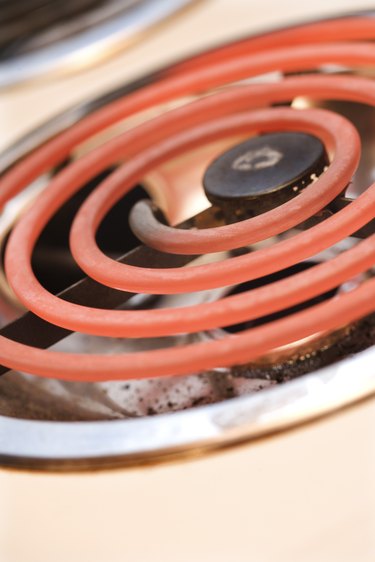
When it is time to select a new range top for your home, understanding the differences among them can help you make the best choice for your family. Electric coil and ceramic cooking surfaces have some significant differences in handling, daily use and cleaning. Depending on the demands of your lifestyle and your style preferences, one may suit your kitchen better than the other.
Cleaning
Video of the Day
Electric coil surfaces can be cleaned easily with traditional kitchen appliance cleaners and a sponge. Depending on the type of surface, you may need a commercial stainless-steel cleaner instead. Ceramic surfaces demand very careful cleaning methods. Use ceramic surface cleaner and a soft cloth to maintain the surface of your ceramic appliance. Clean up sugar spills right away with a paper towel, or scrape cooked-on spills with a plastic scraper or razor blade, using caution to avoid scratching the surface.
Video of the Day
Cookware
Ceramic cooking surfaces require careful cookware selection. Most manufacturers recommend using heavyweight cookware made from stainless steel or aluminum for the best results. These materials conduct heat well without damaging the ceramic surface. Cast iron with an enamel coating that provides a smooth bottom is acceptable, provided that you lift the pan before moving it. Electric coil appliances are much more forgiving about cookware choices. Heavy cookware that conducts heat well is acceptable, whether it's ceramic, stoneware, cast iron, stainless or aluminum.
Heating
Coil burners heat rapidly, reaching the set temperature faster than ceramic burners. But heat is more concentrated on the ceramic burners, creating an efficient cooking process. Coils remain hot longer than the ceramic burners and pose a burn risk if you bump the coils that protrude from the surface. A coil burner plugs into a power source beneath the stove surface. The connection may come loose, causing the burner to fail. Ceramic cooking surfaces do not experience this problem.
Surface Durability and Appearance
Electric coil surfaces are more durable than ceramic surfaces when you need to place things on top of them. For example, you can place grocery bags on the coil surface without risking any damage to the cooking area. If you place the bags on a ceramic surface, however, it can scratch or otherwise damage the top. Ceramic surfaces are smooth and appear more streamlined in the kitchen as compared to coils, which protrude from the top of the stove, visually disrupting the smooth lines of the appliance.